Chilean Blob Mirrored St. Augustine Monster
Posted by: Loren Coleman on January 7th, 2011
One of the most interesting observations made by French cryptozoologist Michel Raynal is the quite close comparison that can be made between the Chilean Blob and the carcass that came ashore in 1896 in Florida.
Forget about DNA for a moment. Look at the physical nature of the shapes.
First a little background on the Chilean Blob: On June 23, 2003, a “blob” 12 m long, 5.8 m wide, 1.6 m high, and estimated to weigh 13 tons was found on a beach near Puerto Montt in Los Muermos, Chile by the Chilean Navy. On July 2, European zoologists contacted by the Chileans said it might be an Octopus giganteus, a rare, cryptid, giant octopus whose remains were first seen in 1896 in Florida. However, some experts suspected it to be just whale blubber or something else less interesting. Samples were sent to laboratories in the United States, France and Italy for DNA testing. On July 11, Chilean scientists announced that it is merely whale remains.
Raynal, in his 2009 presentation in Belgium, did a good job of showing the visual matching that is rather apparent.
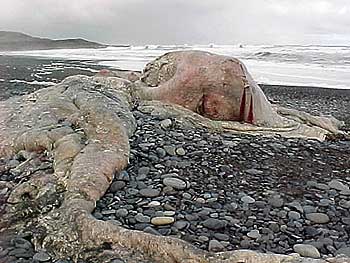
Chilean Blob, 2003.
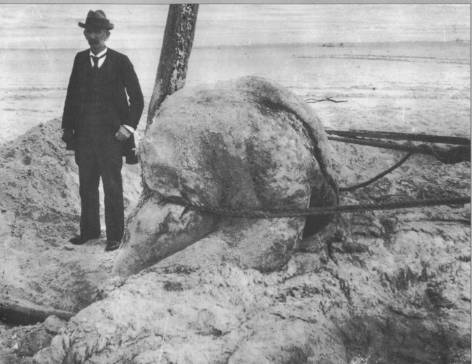
Florida Monster, 1896.
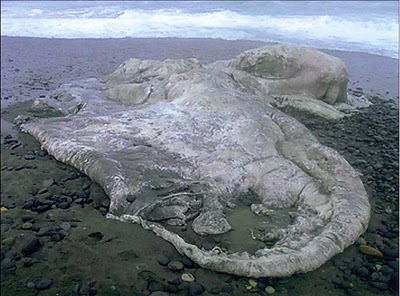
Chilean Blob, 2003.
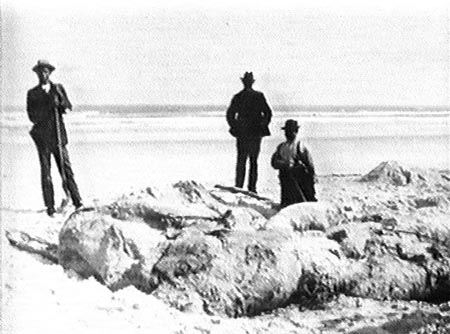
Florida Monster, 1896.
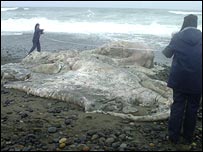
Chilean Blob, 2003.
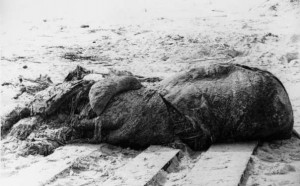
Florida Monster, 1896.
About Loren Coleman
Loren Coleman is one of the world’s leading cryptozoologists, some say “the” leading living cryptozoologist. Certainly, he is acknowledged as the current living American researcher and writer who has most popularized cryptozoology in the late 20th and early 21st centuries.
Starting his fieldwork and investigations in 1960, after traveling and trekking extensively in pursuit of cryptozoological mysteries, Coleman began writing to share his experiences in 1969. An honorary member of Ivan T. Sanderson’s Society for the Investigation of the Unexplained in the 1970s, Coleman has been bestowed with similar honorary memberships of the North Idaho College Cryptozoology Club in 1983, and in subsequent years, that of the British Columbia Scientific Cryptozoology Club, CryptoSafari International, and other international organizations. He was also a Life Member and Benefactor of the International Society of Cryptozoology (now-defunct).
Loren Coleman’s daily blog, as a member of the Cryptomundo Team, served as an ongoing avenue of communication for the ever-growing body of cryptozoo news from 2005 through 2013. He returned as an infrequent contributor beginning Halloween week of 2015.
Coleman is the founder in 2003, and current director of the International Cryptozoology Museum in Portland, Maine.










I’ll give you the similarities in appearance, but similarities does not mean conclusive. I’m also going on the evidence that the tissue tested was said to be octopus tissue.
And while technology has gotten better, I remember reading that initially the St. Augustine globster was thought to be the rotting carcass of a whale too, but that upon looking the mass over, there was enough doubt that tissue samples were taken and examined. The end result is that even in 1938, it was determined that the tissue was not whale, but octopus.
Did they make a mistake back then? While it may be possible, the examiner of the tissue was confident enough to make the distinction between whale blubber and octopus flesh–there was obviously some discrepency between the tissue sample and whale blubber.
That’s why the St. Augustine carcass stands out for me–and so far, I’m not convinced that it was whale blubber.
What does whale blubber look and feel like?
If it is fat, then it should be lot less rubbery and solid than the St Augustine and Chilean carcasses.
Unless blubber has some other qualities to it that I am not aware of.
Here is a video which shows two scientists giving contradicting information on the St Augustine monster. Was on the Monsterquest episode.
The octopus tissue identification was by Roy Mackal in the 80s, followed by Eugenie Clark and others reidentifying it as blubber, followed by Richard Ellis among others protesting they were ignoring the physical question of how a giant featureless mass could result from a whale carcass, followed by the Chilean example demonstrating that it could happen… I think the St. Augustine carcass falls into the category of “probably but not quite definitely explained.”